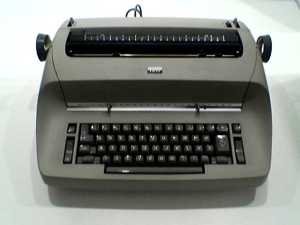 I had a conversation with a friend in my writing group the other day. He paid for an expensive edit, but was not pleased with the results. The editor gave his ms only one fairly good look, and gave him a report with suggestions and ideas, but he was left more confused than ever. She has not worked with him to help him resolve those issues, and wants to be paid for a second look. This was more of a beta read than an edit, and that fact should have been disclosed when he hired her.
I had a conversation with a friend in my writing group the other day. He paid for an expensive edit, but was not pleased with the results. The editor gave his ms only one fairly good look, and gave him a report with suggestions and ideas, but he was left more confused than ever. She has not worked with him to help him resolve those issues, and wants to be paid for a second look. This was more of a beta read than an edit, and that fact should have been disclosed when he hired her.
The professional editors I know do expect to be paid for their work, but they also work closely with the authors to help their clients turn out books that are finished to the best of their ability, thus giving the author their money’s worth. This involves many revisions of entire sections and lots of back and forth communication between the editor and the author.
When I looked at his ms, I could see one thing that stood out immediately. His characters have a lot of internal dialogue. The editor told him not to set it off with italics, and technically she was correct, but she offered no insight to him on how to correctly portray his character’s thoughts. Unfortunately, with no way of distinguishing it, I found it difficult to differentiate the internal dialogue.
Now don’t get me wrong, the editor was technically correct. The Chicago Manual of Style agrees with her, and in some ways, so do I. As a reader, a wall of italics is daunting, and causes the eyes to get tired. If she was truly acting in his best interest, she could have shown him ways to get around the whole issue of internal dialogue, instead of just saying don’t use italics.
But I do use italics to set off certain thoughts in my own work, so how do I balance this apparent hypocrisy? I have learned to use less internal dialogue, trying to only use it now when it is natural in the context of the scene.
As I look at my body of work, I can see it evolving toward a leaner style of writing, and less emphasis on idle thoughts is key to that style. My early work is rife with internal dialogue. In my recent work there is some internal dialogue, but not as much. The context of the story determines whether it is necessary or not.
 In the days before computerized word processing and desktop publishing, the publishing process began with a manuscript and/or a typescript that was sent to a print shop where it would be prepared for publication and printed. In order to show emphasis—to highlight the title of a book, to refer to a word itself as a word, or to indicate a foreign word or phrase—the writer would use underlining in the typescript, which would signal the typesetter at the print shop to use italic font for those words.
In the days before computerized word processing and desktop publishing, the publishing process began with a manuscript and/or a typescript that was sent to a print shop where it would be prepared for publication and printed. In order to show emphasis—to highlight the title of a book, to refer to a word itself as a word, or to indicate a foreign word or phrase—the writer would use underlining in the typescript, which would signal the typesetter at the print shop to use italic font for those words.
Nowadays we have word-processors. Authors can italicize to their hearts’ content and the ms will not be full of underlined words that distract the editor. This has lead to some authors being a bit too free with italics, and I have been guilty of that.
The important thing to remember is that everything your main characters think does not have to be written. When it is necessary, there are ways to get it across without resorting to italics except in the most important instances.
Indie author Karen Fox has an awesome post on common mistakes made by authors. She says, (and I am directly quoting from http://www.karenafox.com/commonmistakes.htm,)
“(Interior Monologues are) very important in writing. Reveals parts of the story not available through dialogue. A powerful way to establish character, but often overwritten. Again don’t explain if emotions or details are already shown through dialogue or action. This should be unobtrusive. Long passages of internal monologue often become ways of telling the reader information instead of showing.
One way to do this is to get rid of speaker attributions. Instead of Why had she said that? Because he drove her crazy, she thought, use Why had she said that? Because he drove her crazy. He wondered what he’d done to make her leave can be transformed to What had he done to make her leave?
Interior monologue helps set point of view. It is not the same thing as description, though the two can blend together. Use impressions obtained through the POV character’s senses. We use our sight, hearing, smell without thinking about it. Your character will, too.
You can use italics to show a character’s thought, but use sparingly. Too many italics are irritating, but they can be a good way to set off a more important thought in the middle of a monologue.”
 Internal dialogue is necessary, but not if it is a crutch. Authors tend to be lazy. Once we find an easy way to get a point across it becomes our go-to tool when a particularly tough scene is refusing to unravel for us. We tell ourselves it is “our voice” and therefore it is our style.
Internal dialogue is necessary, but not if it is a crutch. Authors tend to be lazy. Once we find an easy way to get a point across it becomes our go-to tool when a particularly tough scene is refusing to unravel for us. We tell ourselves it is “our voice” and therefore it is our style.
Yes, that can be true, but we must never rely on easy tricks to tell our stories. Readers always notice, and it makes our work less enjoyable for them.








Rule #1: be consistent, whatever you do.
I was “taught” [a.k.a., force-fed] in my MFA workshops that if the inner monologue stands alone, use italics. If it has a tag (blah blah blah, he thought) then do not use italics.
More recently I learned [via rapacious critics] to start a new section when a different character’s inner monologue is to be offered–not within the same section and NEVER within the same paragraph.
And when it is the author’s inner monologue being presented, I always USE CAPS so the reader knows it’s important.
LikeLike
A great post with excellent advice!
LikeLike
Thank you Ms. Editor! (the awesome sort of editor who would never leave a client twisting in the wind.
LikeLike
This was a great article! Thanks for that! I use italics, so I’ll have to take care not to go overboard with it!
LikeLike
Thank you Erin! Me too!
LikeLike
@Stephen quote “…to start a new section when a different character’s inner monologue is to be offered–not within the same section and NEVER within the same paragraph.” You are on the money, sir!
As far as caps go, I don’t use them, as they are perceived as being loud and shouting.
LikeLike
I love to read and write a character’s inner thoughts. So much tedious exposition can be encapsulated or condensed with a simple thought. My no doubt barbaric use of italics will continue as a consequence, but I agree that interior monologue is often used as a ‘rambling’ device. A good editor will carve out swathes of such laziness, but know when to leave pivotal points and stylistic signatures well alone. Literary editors capable of such fine discernment are, in my limited experience of fiction writing, quite rare.
Apologies for the alliteration 🙂
LikeLike
So true, J.D. Hughes. I will continue to express my character’s thoughts, and use italics to do so–but I am finding other ways to express things that aren’t essential to advancing the plot. I confess I’ve been a lazy smurf, and my editors have shown me how not to be!
LikeLike